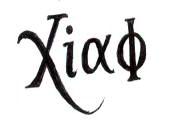Encounter with the Rising Sun (Manila Times Walking History)
by xiaochua
By Michael Charleston “Xiao” Chua
October 3, 2020
THE end of the 1930s was an era of optimism in the Philippines. In a few years’ time, the Americans would fulfill their commitment to recognize our independence that they took away in 1899. But the 10-year transition known as the Commonwealth was of course met with the realities of governance.
And another storm was looming, for Asia was under the shadow of the flag of the Rising Sun, and the world under the spell of fascism and authoritarianism.
The Rising Sun flag, the Japanese flag featuring a sun with 16 symmetrical rays extending outward, was widely used by the Japanese Imperial Army and Navy and became a symbol of Japanese militarism and expansionism. It was a symbol of Japan’s ambitions, but dressed in noble intentions. The Japanese offered to free Asia from the yoke of European domination and create an Asia for the Asians.
That would be betrayed by Japan’s occupation of China where, in 1937, Japanese imperial troops killed approximately 300,000 people in what is called the Rape of Nanking.
Although a sizeable Japanese community was already present in the Philippines, particularly in Davao and in Manila where they had taken on odd jobs as gardeners, barbers, vendors, photographers, the country’s leaders still felt the fog of war and it was reflected in their addresses during the Commonwealth anniversary of Nov. 15, 1941.
In three weeks, Japan would bomb Pearl Harbor in Hawaii on December 8. In coordinated attacks, they bombed Manila and other cities such as Baguio. The American planes at Clark Field flew all morning but when they went down to refuel, they were wiped out by the Japanese. Some Japanese workers here turned out to be officials of the Japanese armed forces. President Manuel Quezon declared the arrival of zero hour. General Douglas MacArthur, Field Marshal of the Philippine Islands, who could not be contacted in the first hours after the attack, finally called on the Filipinos who trained under the Reserve Officers’ Training Corps to suit up to fight the Japanese. Quezon tried to convince the US government to actually declare the Philippines independent so he could declare the country to be neutral to avoid being invaded. The Americans thought that wouldn’t help anyway.
By January, many countries in Southeast Asia would welcome the Japanese as liberators against their European colonizers and Japan would easily take over them. In the Philippines, however, the response to General MacArthur’s call was overwhelming. Even the young cadets from the Philippine Military Academy and other universities, who were rejected so the youth could be preserved, did not go home but proceeded to the mountains to form their own guerrilla groups.
Why did the Filipinos reject the Japanese? Revolutionary heroes like Gen. Artemio Ricarte, who had spent the past decades in Japan, and President Emilio Aguinaldo welcomed the Japanese. In our revolutionary history, Japan was a hub for our heroes like Mariano Ponce. In the eyes of that generation, Japan was a friend. But most Filipinos wanted only to fight. They believed America’s promise of independence by 1945 and Japan was getting in the way of that dream.
MacArthur felt that the overwhelmingly long coastline of our archipelago could not be realistically defended and so ordered the army to proceed to Bataan. Manila was declared an Open City to prevent the destruction of the city (they still bombed it anyway), but the US-Filipino troops would be in Bataan and nearby Corregidor Island (Cavite) to block the entry of the big Japanese ships to Manila delivering their supplies and manpower.
The Commonwealth government and MacArthur were evacuated to Corregidor. For three months since the beginning of 1942, the Filipinos enthusiastically frustrated the Japanese by their successful defense of Bataan. The radio station Voice of Freedom kept the people’s spirits alive with promises of American reinforcements even if the Japanese were flying leaflets to our troops with photos of families and beautiful women just to entice them to go home and stop fighting.
But the reinforcements would not come. The US government in Washington decided they could not fight on two fronts and since it was difficult to bring supplies to the Philippines with the Japanese all over Asia, they decided to prioritize Europe. As our defenders started to suffer with the lack of food and ammunition, the Japanese reinforcements arrived and by April started their move against Bataan. The veterans told of how they resorted to digging boulders to throw at the Japanese because they had no bullets. Their stories told of the no-surrender attitude of the Filipinos.
But the Americans surrendered Bataan on April 9. Since 75,000 surrenderees could not be transported to the concentration camp at Capas, Tarlac, they were made to walk the hundred kilometers to Capas under the heat of the summer sun in what is known as the Death March.
The Filipinos were defeated, but they were the last to fall in Southeast Asia. The free world uttered, “Remember Bataan.” Filipinos became synonymous with courage.
